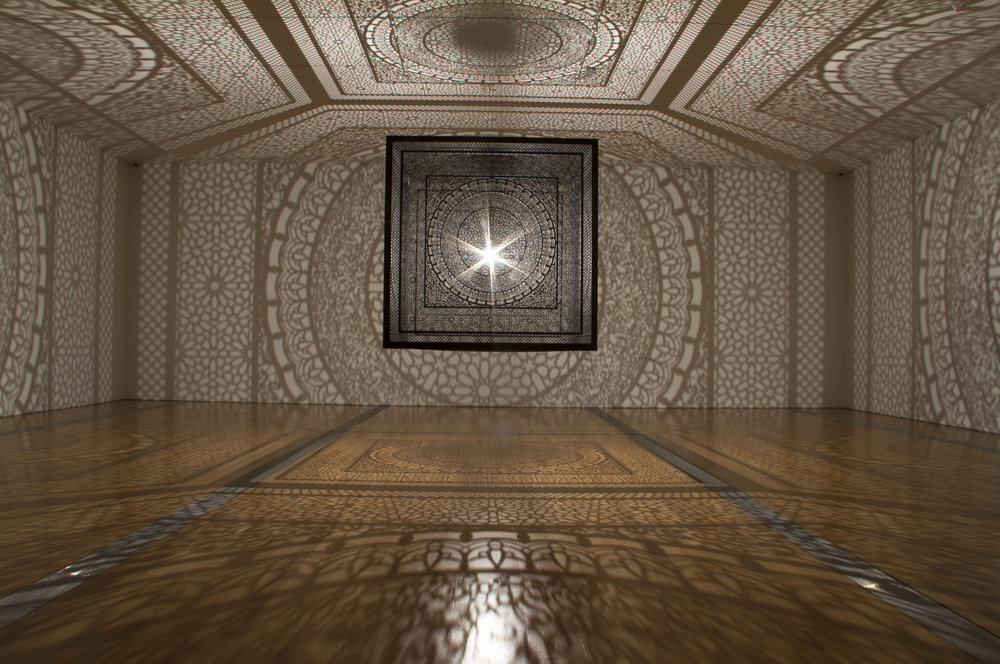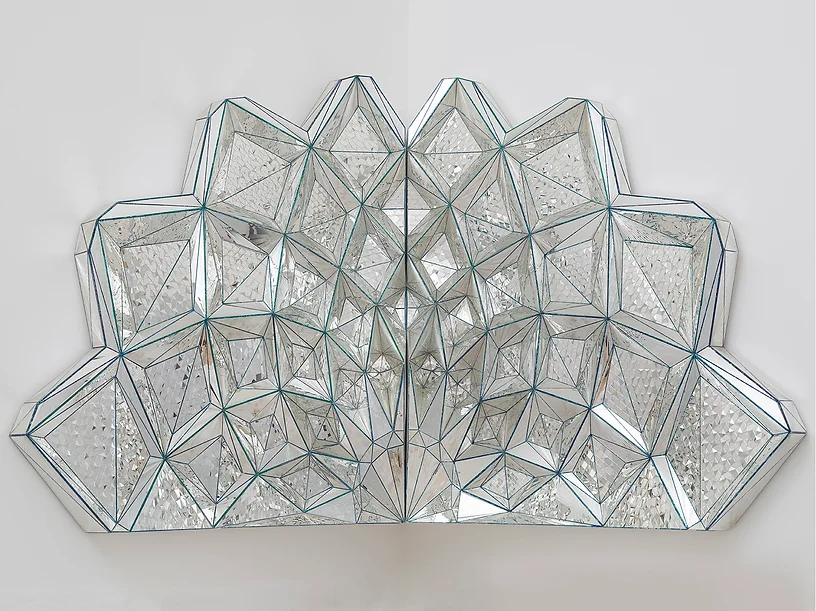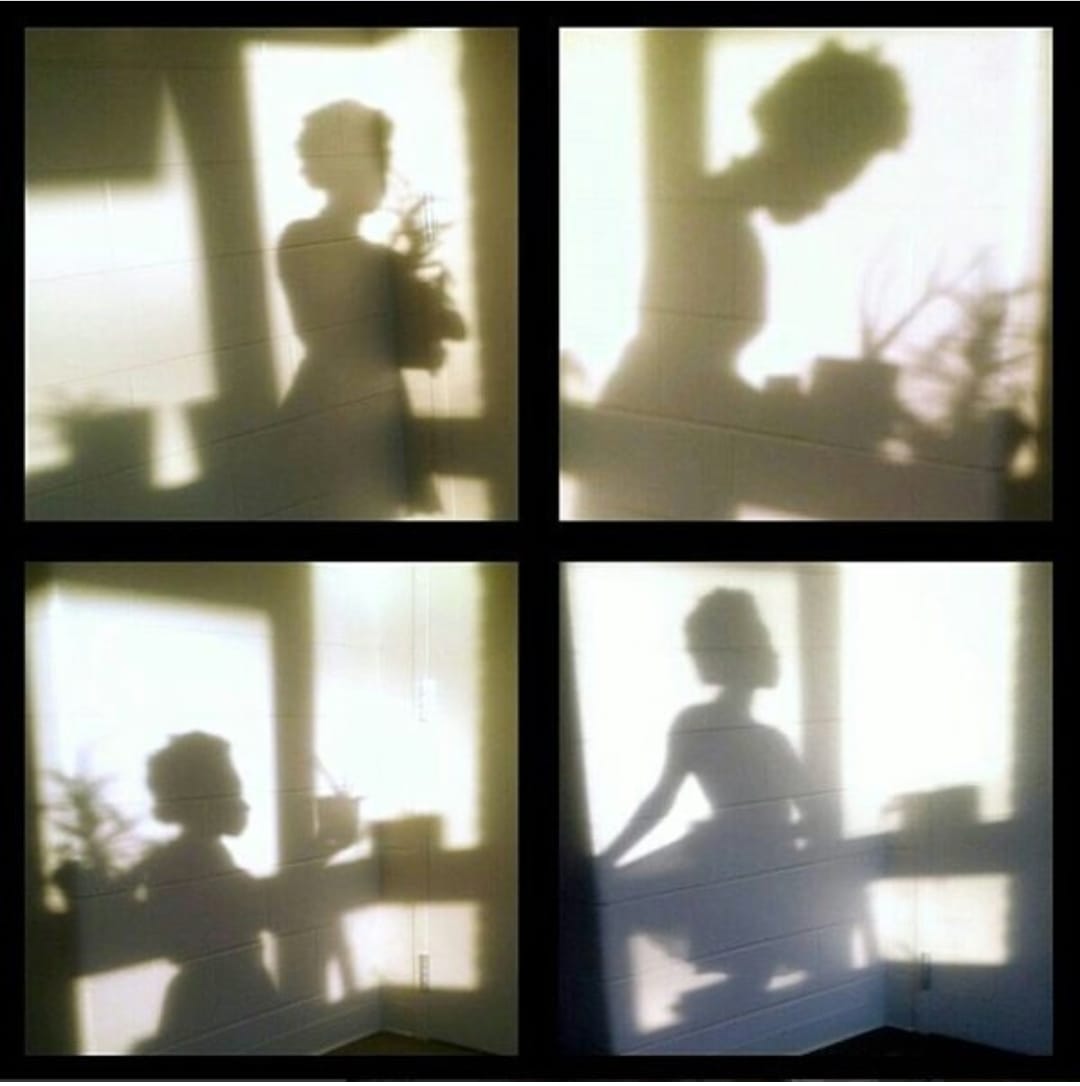Years later, the sight of this piece still brings me to a reverent standstill. In an empty white room, a single bulb in a suspended cube casts intricate, shadowy patterns everywhere.
I find joy in identifying artistic pairs—work from different artists that seem to be talking to each other across time and mediums. A poem’s (“War Ballad”) melancholy will remind me of a song (“Firewood”), or a movie’s depiction of love (If Beale Street Could Talk) of a photograph (Malick Sidibé’s “Nuit de Noël”). For years, the pair of Anila Quayyum Agha and Monir Shahroudy Farmanfarmaian has enchanted me.
Anila Quayyum Agha is a Pakistani-American artist best known for her light-infused, Alhambra-inspired installations like Intersections. Her play with shadows and use of resin painting create harmonious, glowing pieces. A generation earlier, Monir Shahroudy Farmanfarmaian was an Iranian artist who crafted stunning tessellations from mirror mosaics and reverse glass painting. Together, these women’s artwork is attune to the hidden geometry in the world around us, from flowers, to architecture. Every time I saw one of their artworks, I grew in visual appreciation until I was curious about how they arrived at their perspectives. What makes their art dance as a pair?

Intersections by Anila Quayyum Agha. Find more work by the artist at http://www.anilaagha.com/installation
For one, Agha and Farmanfarmaian’s artwork reclaim women’s creative labor as worthy art. Agha’s masterful embroidery on paper in “Mysterious Inner Worlds” rejects the idea of sewing as a simple, unrefined domestic task. And Farmanfarmaian’s redefinition of mirror mosaics was historic in a cultural context where the technique was mostly passed down from fathers to sons.

Untitled (Muqarnas) by Monir Farmanfarmaian. Courtesy of Haines Gallery. Find more work by the artist at https://www.monirff.com/mirror-works
Both South Asian artists also knit together the private and the public. Their larger pieces are inspired by the intricate grandeur of mosques, spaces where they felt either “overwhelmed” in wonder or restricted as children. In their artwork, methods once reserved for religious iconography now create intimate sacred spaces of peace for anyone. The viewer sees herself in a new light, whether through the fragmented mirrors of muqarnas or the gentle shadows of lasercut boxes.
At the same time, their art showcases deeply personal struggles with belonging. Agha’s experience as an immigrant wrestling to be heard in English, Hurdu, Urdu, moved her to hang hand-cut letters in all three languages from the ceiling, creating “My Forked Tongue,” an arresting cascade of the words that shape us. In contrast, Monir found herself unable to return to her homeland for over twenty years due to the Islamic Revolution. During this exile, separated from her artistic materials, possessions, and community, she began assembling, “Heartache Boxes.” These colorful diorama-style sets combined textiles, photographs, and wood to memorialize the parts of her life she refused to forget. Maybe these tangible reminders of her identity gave her the remarkable strength to restart her artistic career in Iran when she returned in her seventies.
Both Agha and Farmanfarmaian’s art has served as a door, encouraging me to learn more about Islamic art, Muslim identity, and Iranian social movements. And I’m grateful their art has also been a mirror, motivating me to document the surprising stories that can be found in the shadows of our lives.

Comfort Sampong’s heart is sparked by fried plantains, tropical foliage and the stories of women thriving and creating a way out of no way. She graduated in 2018 with majors in economics and international development. Now she lives in Tegucigalpa, Honduras, where she works on English communications for the Association for a More Just Society, a Honduran non-profit fighting for justice and peace.



